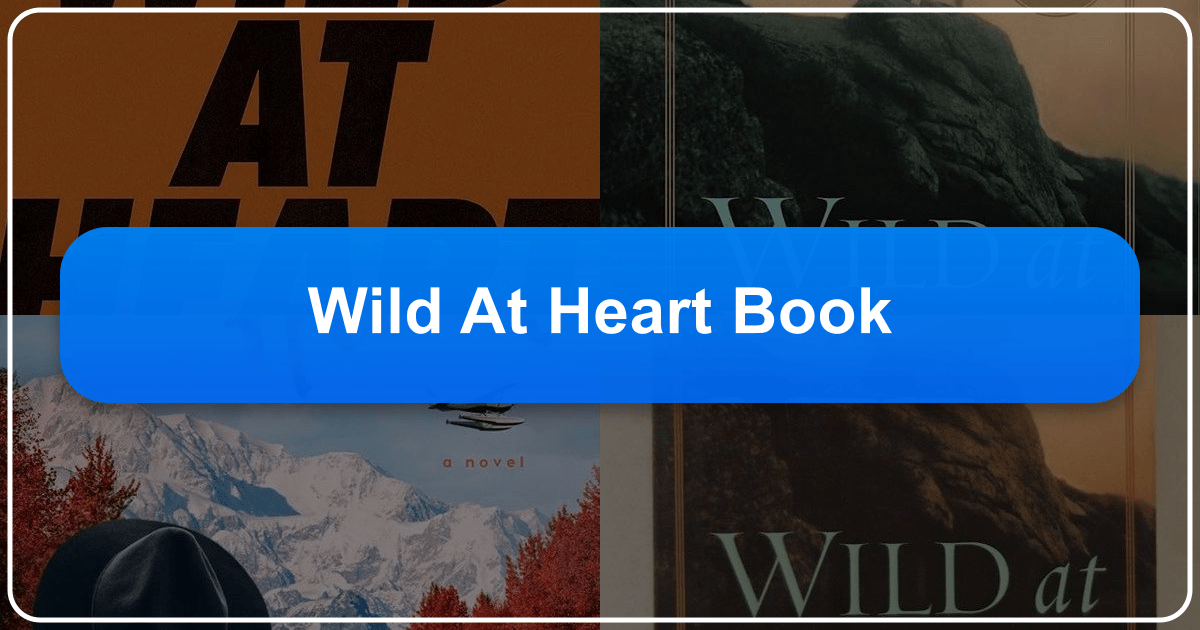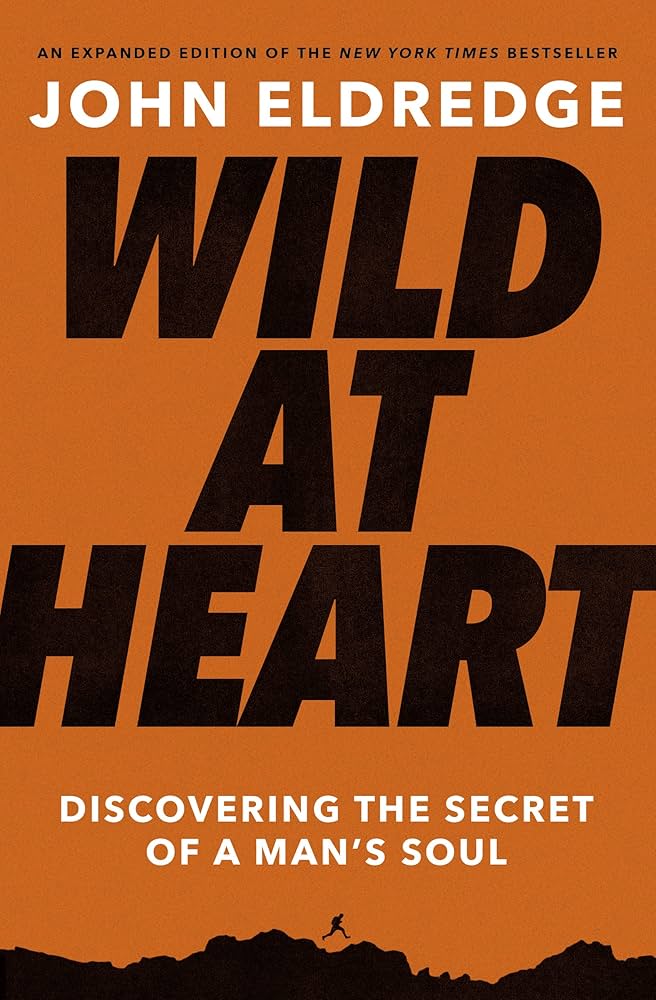*Wild at Heart* Book: A Deep Dive into John Eldredge's Exploration of the Masculine Soul

John Eldredge’s Wild at Heart, particularly its expanded edition, has sparked significant conversation and controversy within and beyond Christian circles. This book, a blend of memoir, self-help, and theological reflection, delves into the complexities of the masculine soul, exploring themes of purpose, identity, and the yearning for a life of adventure. This article examines Wild at Heart through various lenses, considering its genre, authorial style, cultural impact, and the enduring questions it raises.
Genre and Literary Style
Wild at Heart defies simple categorization. While marketed as a self-help book for men, its blend of personal narrative, scriptural interpretation, and evocative prose places it within a broader literary landscape. It’s not strictly a theological treatise, nor is it solely a self-help manual. Instead, it occupies a liminal space, combining elements of memoir, spiritual guidance, and even elements of adventure literature. Eldredge’s writing style is characterized by its accessibility and engaging storytelling. He uses personal anecdotes, compelling imagery, and literary allusions to connect with readers on an emotional level. This approach makes complex theological ideas more relatable, but also opens it up to criticism regarding the use of non-scriptural sources to support central arguments.

A Blend of Genres
The book successfully blends several genres. The personal narratives woven throughout make it feel like a memoir, offering intimate glimpses into Eldredge’s own journey of discovering his “wild heart”. However, the core message is explicitly designed to offer spiritual guidance, advising men on how to connect with their authentic selves and find fulfillment in their relationship with God. The adventurous tone and use of metaphorical language, drawing on imagery of knights, warriors, and quests, hints at elements of adventure literature. This unique genre blend makes the book accessible to a wide audience, but it also opens it up to criticism regarding its methodological rigor.
John Eldredge: Author and Theologian
John Eldredge is a bestselling author, counselor, and teacher. He is also the president of Ransomed Heart, a ministry focusing on helping individuals connect with God’s love and live fulfilling lives. Eldredge’s background in counseling informs his approach in Wild at Heart, offering a blend of psychological and spiritual insights.

Eldredge’s Approach and Inspirations
Eldredge’s approach is deeply personal. He draws on his own life experiences, intertwining personal stories with scriptural interpretations and psychological observations. This approach, while creating an engaging reading experience, has also invited criticism regarding its methodological rigor and potential for subjective interpretation. His use of biblical texts is often seen as selective and potentially out of context, with critics suggesting he prioritizes personal insights over strict theological accuracy. The overall inspirational tone might appeal to some, while leaving others seeking a more academically rigorous approach wanting more. The literary influences and anecdotes Eldredge uses are varied, ranging from classic literature and popular films to personal experiences. This eclectic approach aims to create emotional resonance, but also makes the book’s theological positions less clear and more open to subjective interpretation.
Reading and Learning: Summaries and Life Lessons
Wild at Heart centers on the idea that men have a deep-seated longing for adventure, purpose, and a sense of belonging. Eldredge argues that modern society and certain aspects of traditional Christianity have stifled this “wild heart,” leading to dissatisfaction and spiritual emptiness. The book’s message encourages men to:

- Reconnect with their inherent masculinity: This involves acknowledging and embracing their innate strengths, desires, and passions. Eldredge aims to redefine masculinity not as aggression or dominance, but as a force for good, capable of courage, adventure, and selfless love. However, the specific image of masculinity Eldredge presents has attracted criticism for being too narrow and potentially harmful.
- Heal past wounds: He emphasizes the impact of childhood experiences and traumas, urging men to confront and address their emotional wounds to achieve wholeness. This psychological approach complements the spiritual dimension, highlighting the importance of emotional health for spiritual growth. The book encourages emotional healing as a necessary step toward finding spiritual fulfillment, although the psychological underpinnings are often implicit rather than explicitly discussed.
- Embrace adventure and risk: Eldredge champions the pursuit of meaningful experiences that ignite passion and purpose. This doesn’t necessarily mean literal physical adventures, although that imagery is heavily used, but rather any endeavor that challenges limitations, fosters growth, and brings a sense of aliveness. The metaphorical use of “adventure” has been a point of contention, with some interpreting it as a call to reckless behavior and others viewing it as a call to embrace personal growth and risk-taking.
- Discover the life-giving power of nature: Eldredge suggests a deep connection exists between nature and the human spirit, particularly the masculine soul. Spending time in nature is portrayed as a restorative and spiritually enriching activity. This romantic and even mystical connection to nature is one of the book’s more appealing aspects, but it also represents an element of the book that is not directly sourced from religious text.
Educational Value and Life Lessons
The book’s educational value is a matter of ongoing debate. While many readers have found it deeply inspiring and life-changing, others find its theological and psychological underpinnings questionable. Eldredge’s emphasis on emotional healing and the pursuit of purpose resonates with many, offering a framework for self-reflection and personal growth. However, the potential for misinterpretations and the limited basis in scripture lead to many readers finding it less effective. The book’s emphasis on adventure and risk-taking can be interpreted in multiple ways, highlighting both its strengths and weaknesses. Its power lies in its ability to elicit emotional responses and prompt self-reflection, although the lack of detailed theological reasoning leaves room for misinterpretation and potential for harmful application of its concepts.
Cultural Impact and Reception
Wild at Heart has had a significant cultural impact, particularly within evangelical Christian communities. It has inspired numerous men’s ministries, retreats, and small groups, aimed at fostering spiritual growth and promoting a more authentic expression of masculinity. However, its reception has been far from uniform, with significant criticism leveled at its theological methodology, its portrayal of gender roles, and its potential for misinterpretation.
Literary Influence and Adaptations
The book’s impact extends beyond its direct readership. It has influenced other authors and thinkers within the Christian self-help genre, shaping discussions about masculinity, spirituality, and the integration of faith with personal fulfillment. The use of metaphorical language and evocative imagery has arguably contributed to making complex theological concepts more relatable to a wider audience. However, this very style has also opened it up to criticism for being less precise and potentially misleading. Whether or not the book has directly led to adaptations in film or other media is unclear from the provided text.
Awards and Communities
While information about specific awards is absent from the provided data, the book’s widespread popularity and influence suggest it has garnered recognition within its target market. The communities that have emerged around Wild at Heart demonstrate its capacity to create connection and foster a sense of shared experience amongst its readers. These communities often focus on discussions related to the book’s themes, offering a support network for men seeking spiritual and personal growth. However, this same community building capacity has also been viewed as having the ability to create insular groups potentially resistant to critical viewpoints or alternative perspectives on its controversial ideas.
Conclusion
Wild at Heart remains a complex and compelling text. Its engaging narrative and emphasis on personal growth have resonated deeply with many readers, while its theological methodology and portrayal of gender roles have drawn significant criticism. Ultimately, the book’s value and impact are subjective, varying greatly depending on individual perspectives and interpretations. Its lasting influence lies in its capacity to initiate conversations about masculinity, spirituality, and the search for purpose, even if those conversations are often contentious and deeply rooted in differing perspectives. The lasting legacy of Wild at Heart may be less about definitively answering questions about masculinity and more about prompting further critical exploration of those very questions.